
Join now to start learning
Learn from our quality instructors!
Get startedThis website uses cookies to personalize content and analyse traffic in order to offer you a better experience. Cookie policy
Study any topic, anytime. Explore thousands of courses for the lowest price ever!

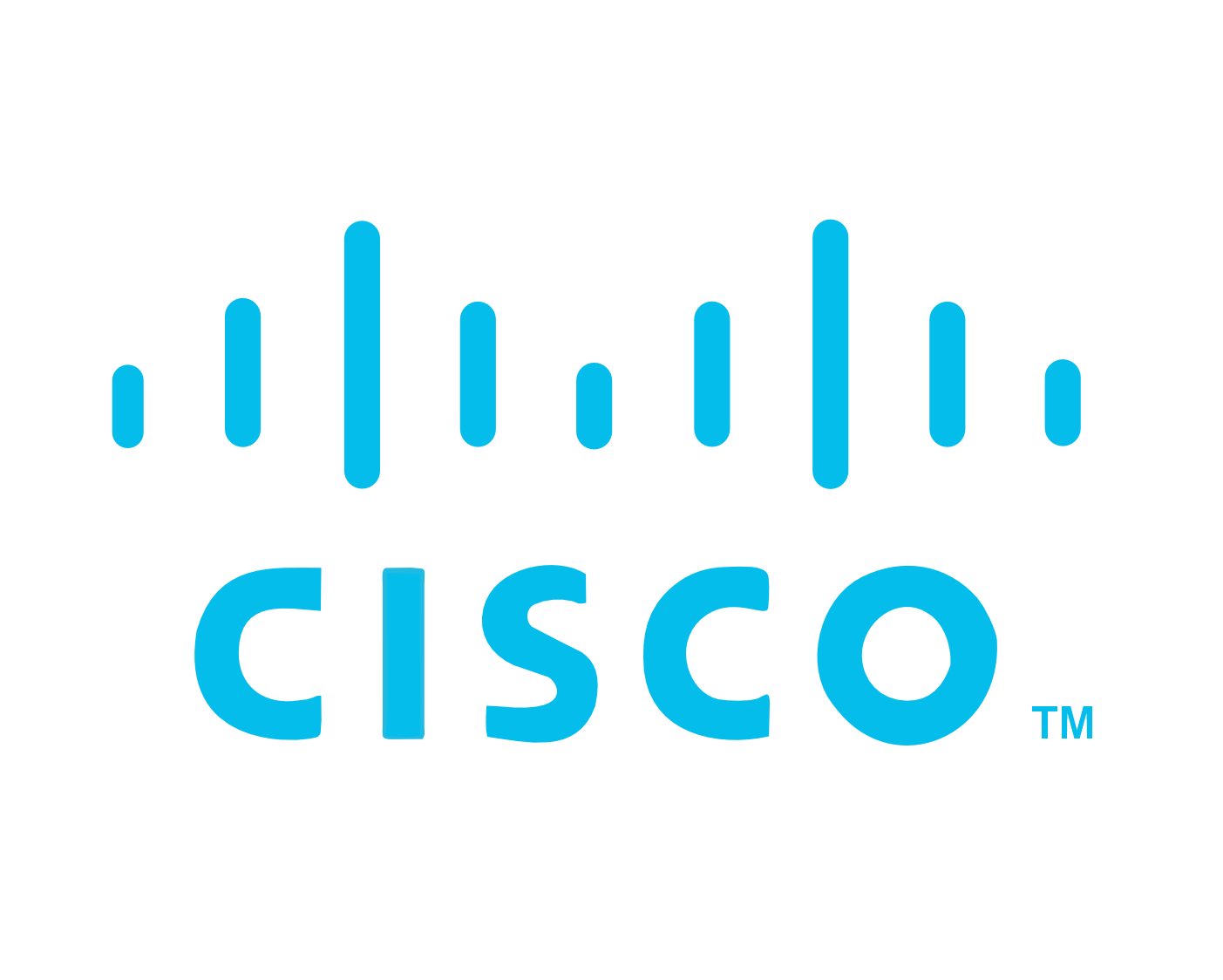


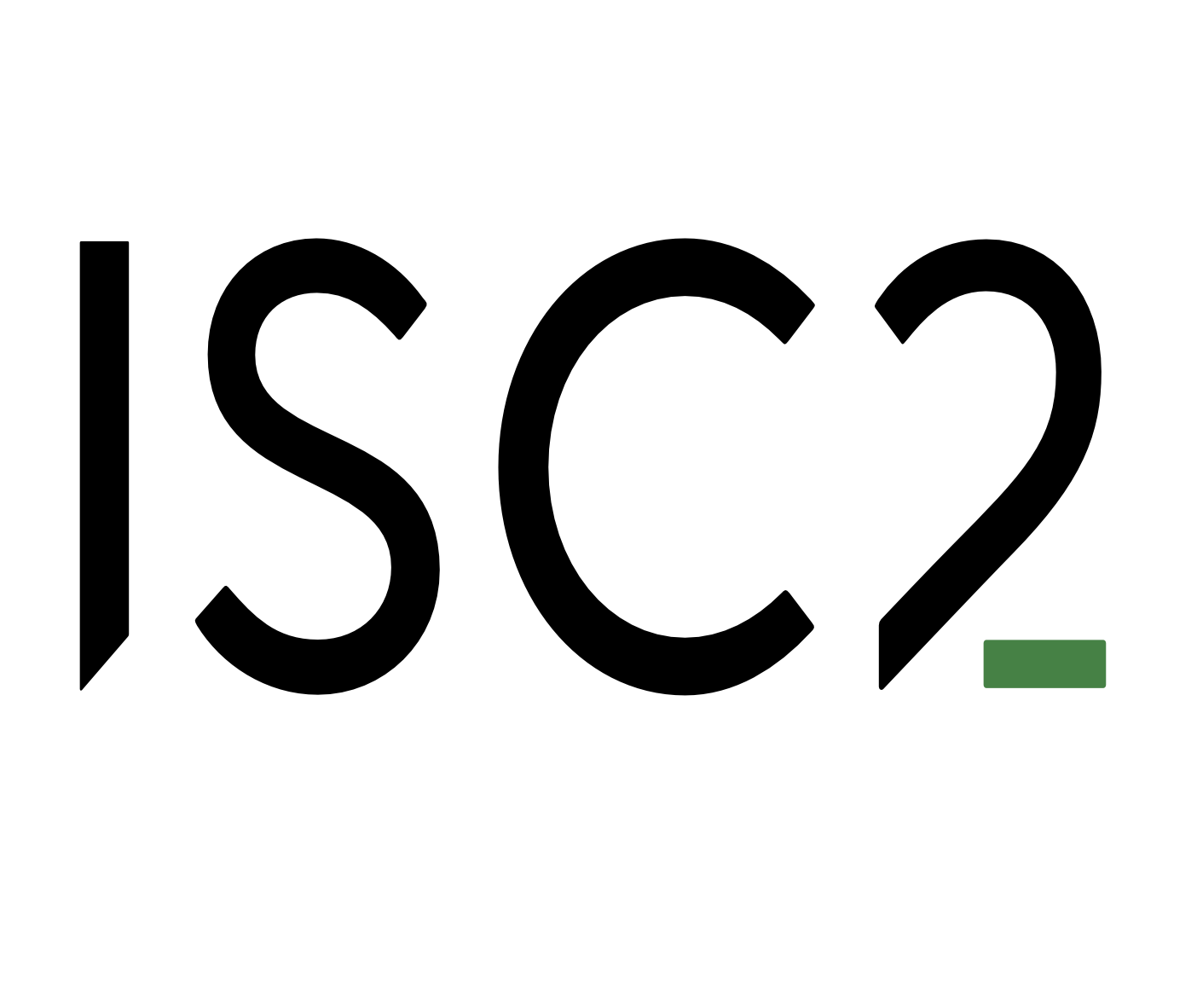
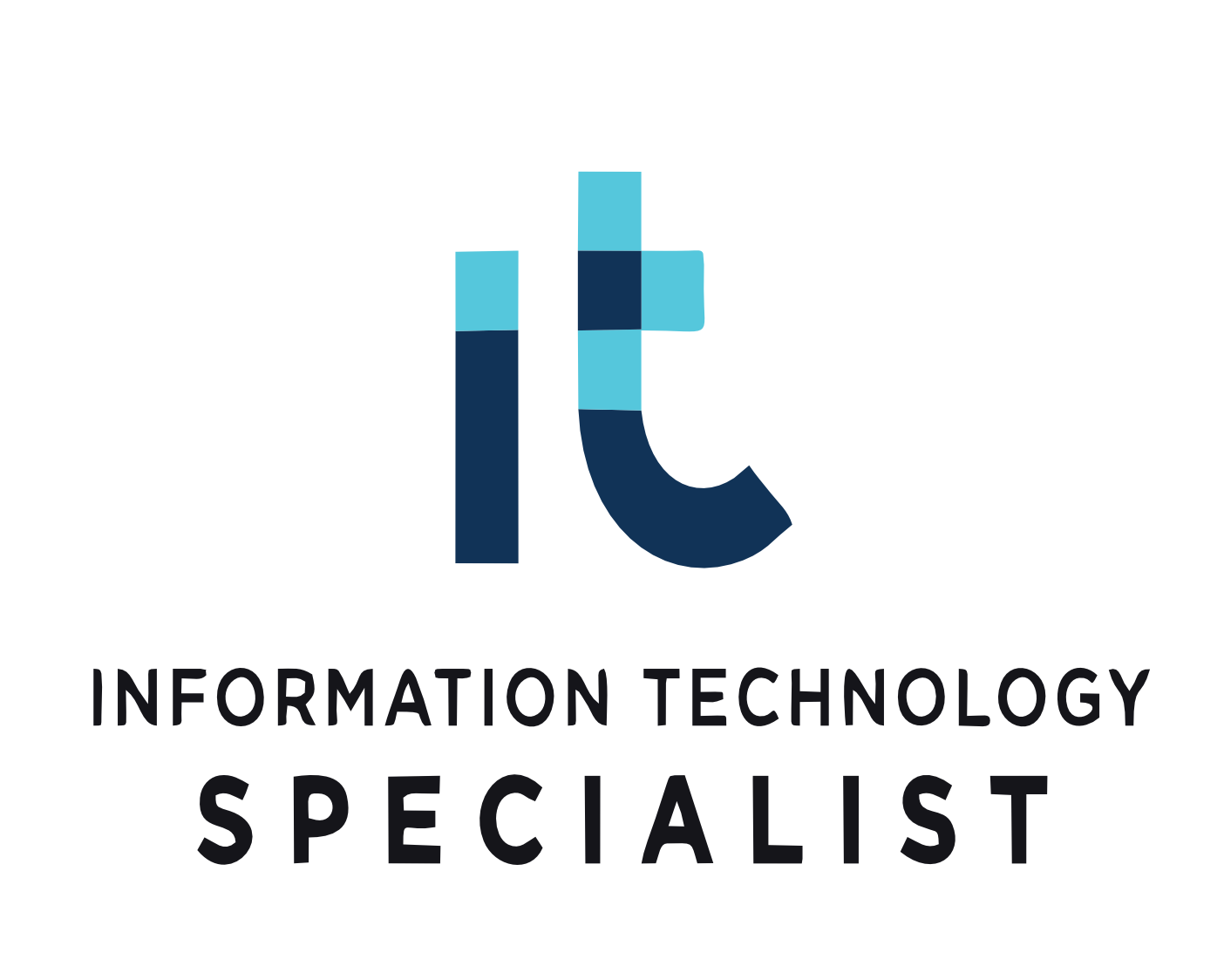
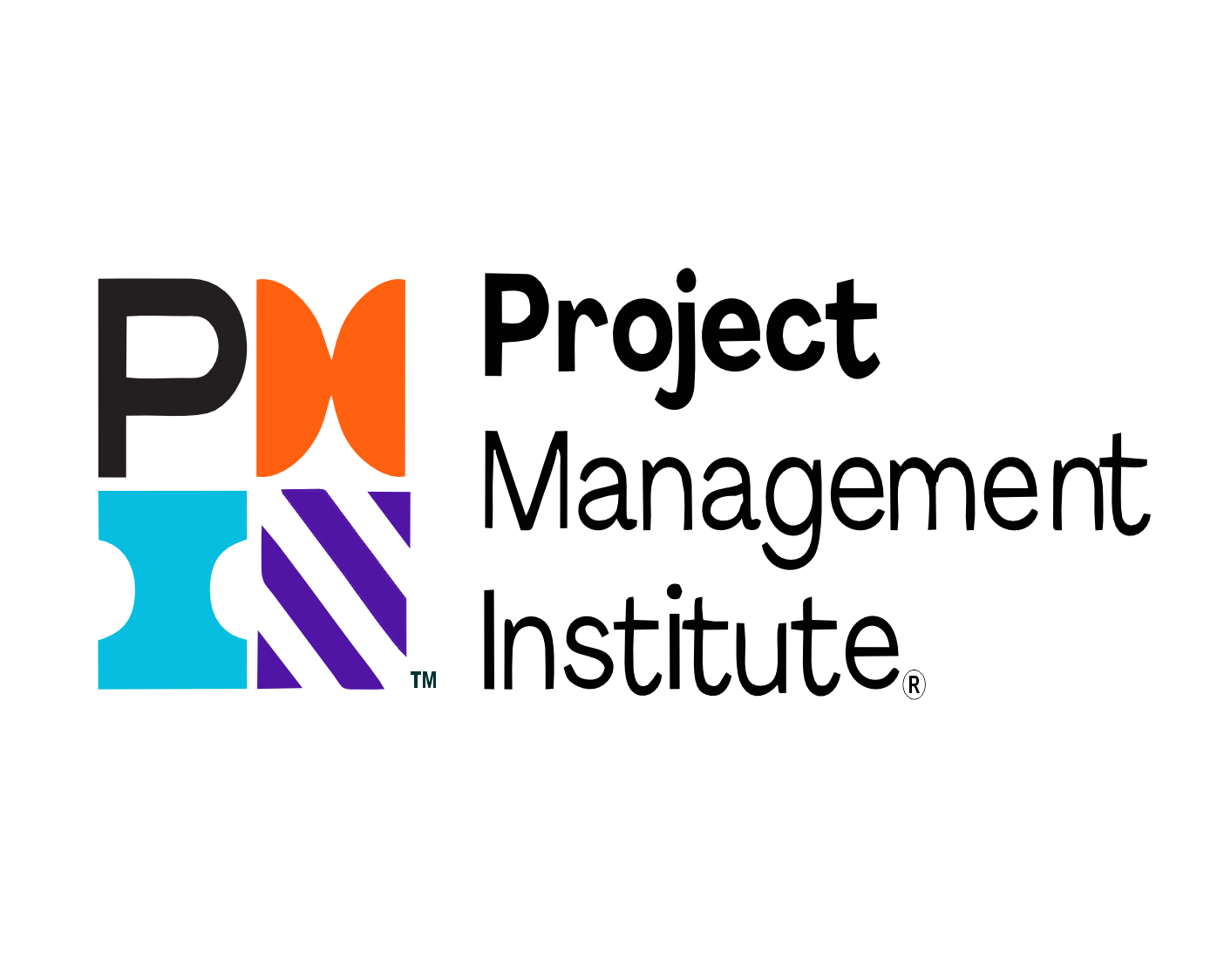
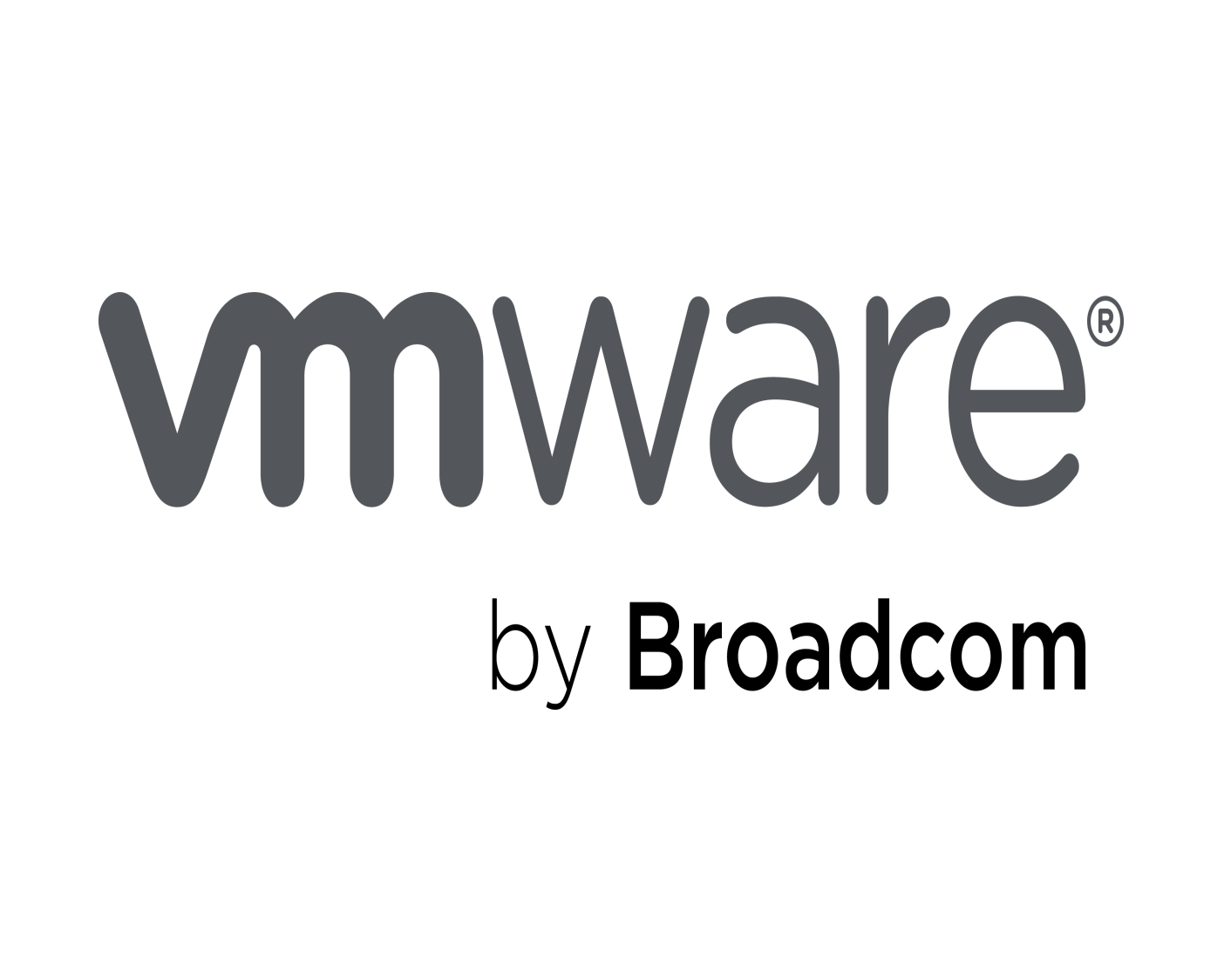
Happy
Students

Experienced
Instructors

Explore a variety of fresh topics

Find the right course for you

Learn on your schedule
Upcoming
Discover a world of learning opportunities through our upcoming courses, where industry experts and thought leaders will guide you in acquiring new expertise, expanding your horizons, and reaching your full potential.
These are the most popular courses among listen courses learners worldwide

0
(0 Reviews)
 Compare
Compare
The Certified Information Systems Auditor (CISA) certification validates an individual's expertise in information systems auditing, control, and security
GH₵8500
Hours
Last updated Fri, 07-Nov-2025
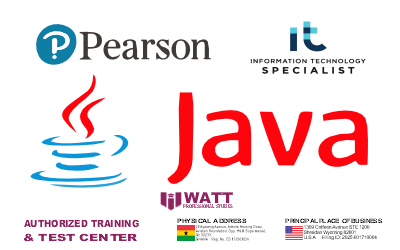
0
(0 Reviews)
 Compare
Compare
The Java course will teach learners software programming basics using Java. As of the year 2022, Java is the second most popular programming language, and it is commonly used for developing web, desktop, and mobile applications. No coding experience is needed to take this course. Learners will learn to solve complicated problems by using the programming skills and tools taught. After completing this course, learners will be prepared for designing, coding, and debugging Java computer programs.
GH₵5000
Hours
Last updated Tue, 02-Dec-2025
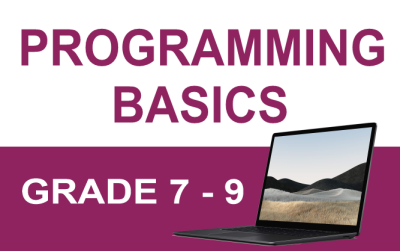
0
(0 Reviews)
 Compare
Compare
Problem solving and algorithm development. Computer hardware and software. Introduction to programming: machine, assembly and high level languages. C programming language. Arithmetic and logical statements, data types, input/output, basic control structures(selection, iteration etc).Array data type and usage of character strings. Functions: Callby-value and call-by-reference, scopes, recursion. Structures. Pointers. Bit manipulation. File processing
GH₵2500
Hours
Last updated Wed, 24-Sep-2025
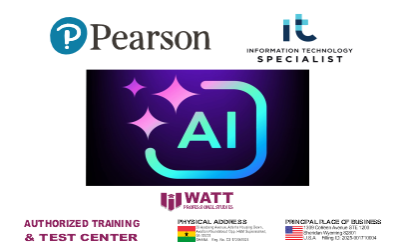
0
(0 Reviews)
 Compare
Compare
Candidates for this certification have a foundational knowledge the procedures used to develop an artificial intelligence (AI) solution, as well as an understanding of the issues surrounding the governance, transparency, security, and ethics of AI. Successful candidates will be able to analyze and classify a problem. They should be able to demonstrate knowledge of data collection, data processing, and feature engineering strategies. Candidates should be able to choose an appropriate algorithm for training a model, and understand the metrics used to evaluate model performance. They should understand the AI development lifecycle and how a production pipeline is used to allow for continuous improvement. Candidates at least 150 hours of instruction and/or exploration of artificial intelligence methodology and solutions
GH₵5000
Hours
Last updated Tue, 02-Dec-2025

0
(0 Reviews)
 Compare
Compare
The Python Certification course will explain the software programming basics using Python. As of the year 2022, Python is the most popular programming language because of its simple syntax and extensive, open-source library of modules. Python is commonly used for creating desktop and website applications in finance, business, and even social media like Instagram and Pinterest. No coding experience is required for this course. Through the programming skills and tools taught, the learners will discover how to solve complicated problems. After completing this course, they will be prepared for designing, coding, and debugging Python computer programs.
GH₵5000
Hours
Last updated Tue, 02-Dec-2025
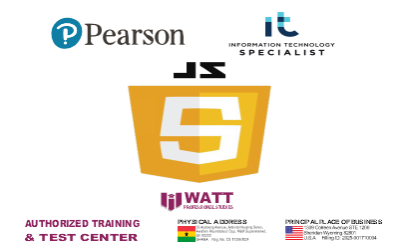
0
(0 Reviews)
 Compare
Compare
The JavaScript course helps learners to develop skills in order to become professional web developers who will be able to create and develop robust, user-friendly and interactive websites. It also teaches learners how to build web applications and mobile applications. Upon completion of this course, learners can expect to have the knowledge of the basic tools and programming skills required to develop a web page and debug using exception handling. The goal of this course is to provide information on how to develop a website using JavaScript and prepare for a JavaScript certificate — including text explanations, video demos, lab activities, self-assessment questions, and a practice exam — to increase chances of passing the exam on the first try.
GH₵5000
Hours
Last updated Tue, 02-Dec-2025

0
(0 Reviews)
 Compare
Compare
Databases serve as a foundation layer of many web and data applications, business reporting functions, and prediction algorithms. In this course, students will learn how to: design and optimize a database create, update and delete records and tables filter and aggregate data automate certain procedures Taken together, these skills will serve as an entry point into data-related careers in reporting, data engineering, and automation.
GH₵5000
Hours
Last updated Tue, 02-Dec-2025
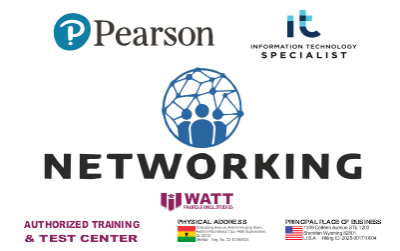
0
(0 Reviews)
 Compare
Compare
Networking course helps learners to develop professionally in the field of Information Technology as network engineers, network Architects and network specialists. These professionals analyze, develop, and evaluate computer networks and network operations. They also create network inventory, diagnose, and find the solutions for the faults occurring in the networks. Troubleshooting, providing support and solving the issues occurring in the network.
GH₵5000
Hours
Last updated Tue, 02-Dec-2025
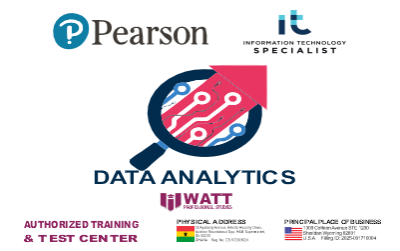
0
(0 Reviews)
 Compare
Compare
Candidates for this exam are seeking to prove introductory knowledge of how to responsibly manipulate, analyze, and communicate findings of data analysis. Candidates should have at least 150 hours of instruction or hands-on experience with data manipulation, analysis, visualization, and communication. They should be familiar with general data concepts, data-related laws, and responsible analytics practices.
GH₵3500
Hours
Last updated Sat, 29-Nov-2025
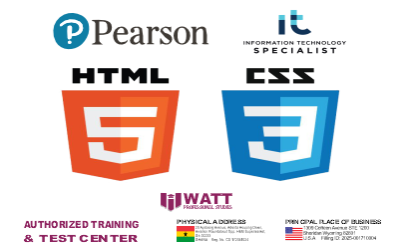
0
(0 Reviews)
 Compare
Compare
HTML is a markup language that instructs devices how to render information on a screen in a visually appealing manner. This instructor-led Pearson IT Specialist HTML and CSS (INF-301) course covers the fundamentals of HTML and CSS as well as accessibility principles. Upon completion, the learner should be able to translate a design document into a functional web page with information-gathering functionality (web form).
GH₵3500
Hours
Last updated Sat, 29-Nov-2025
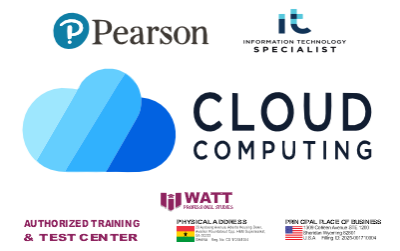
0
(0 Reviews)
 Compare
Compare
The Cloud Computing course covers the entire field of cloud computing. From determining if a cloud solution is appropriate for your organization, to developing cloud infrastructure, implementing the cloud development life cycle, managing cloud operations, and understanding cloud governance. The course is designed specifically to train you for the IT Specialist Cloud Computing Certification.
GH₵5000
Hours
Last updated Mon, 01-Dec-2025
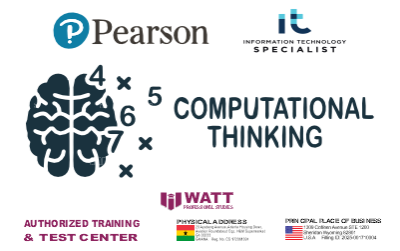
0
(0 Reviews)
 Compare
Compare
his instructor-led Pearson IT Specialist Computational Thinking course focuses on knowledge needed to describe data storage; bits and their storage; representing information in bit patterns; data and programming; data manipulation; arithmetic/logic; programming data manipulation; algorithms; the concept of an algorithm; algorithm representation; algorithm discovery; iterative structures; recursive structures; efficiency and correctness; programming languages; historical perspective of programming languages; traditional programming concepts; procedural units; object-oriented programming; software engineering; the software engineering discipline; the software life cycle; software engineering methodologies; modularity; tools of the trade; quality assurance; documentation; the human-machine interface; data abstractions; basic data structures; related concepts; customized data types; classes and objects; abstract models; database systems; database fundamentals; the relational model; object-oriented databases; traditional file structures; data mining; social impact of database technology; artificial intelligence; intelligence and machines; perception; reasoning; theory of computation; functions and their computation; Turing machines; universal programming languages; a non-computable function; and complexity of problems. Designed for professionals in both non-technical or technical roles, this course focuses on the critical thinking and decision-making skills needed for success at the IT Specialist level.
GH₵3500
Hours
Last updated Sat, 29-Nov-2025
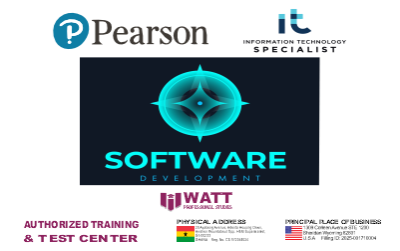
0
(0 Reviews)
 Compare
Compare
This self-paced Pearson IT Specialist Software Development course will explain the concepts, principles, and elements that are essential for a web application. These include algorithms, functional programming patterns, databases, and various programming languages, as well as important software development principles required in the stages of software development.
GH₵3500
Hours
Last updated Sat, 29-Nov-2025
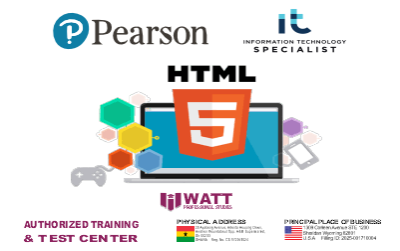
0
(0 Reviews)
 Compare
Compare
This instructor-led Pearson IT Specialist HTML5 Application Development (INF-306) Course is designed to prepare students to develop dynamic web applications for different devices. HTML is commonly thought to be used as a web technology to get a user interface. However, this course will focus on HTML5, CSS, and JavaScript in application development. Upon completion of this course, the students will be able to evaluate, design, and develop functional and responsive web applications that will run on a variety of devices, such as PCs, tablets, and phones.
GH₵3500
Hours
Last updated Sat, 29-Nov-2025
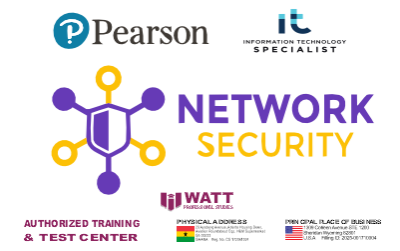
0
(0 Reviews)
 Compare
Compare
The Network Security Certification course is based on learning the different techniques, tools and technologies to protect the network from unauthorized access. Upon completion of this course, learners can expect to have knowledge of identifying the different types of attacks, configuring the user authentication, identifying the protocols, implementing email protection, and managing browser security. Students will also learn to configure anti-malware and antivirus software.
GH₵3500
Hours
Last updated Sat, 29-Nov-2025

0
(0 Reviews)
 Compare
Compare
This instructor-led Device Configuration and Management (INF-103) course is a fundamental level course, aiming to prepare students for success in an IT Tech Support Specialist role. The course will equip students with the knowledge and skills to perform initial device setup and ongoing support to ensure smooth and secure operations of IT devices. Upon completion of the course, students should be able to independently install and configure Windows, manage applications and periphery, manage data on various types of storage, keep devices secure by taking preventive and reactive measures, and perform troubleshooting.
GH₵3500
Hours
Last updated Sat, 29-Nov-2025
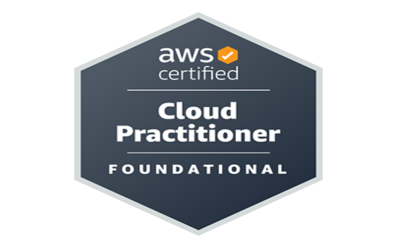
0
(0 Reviews)
 Compare
Compare
The instructor-led AWS Certified Cloud Practitioner (CLF-C02) course focuses on the services and categories of services provided by AWS; security in AWS and details on the implementation of strong security with AWS services; cloud technology and services; and the tools and techniques for controlling costs inside AWS as well as the resources available.
GH₵3500
Hours
Last updated Sat, 29-Nov-2025
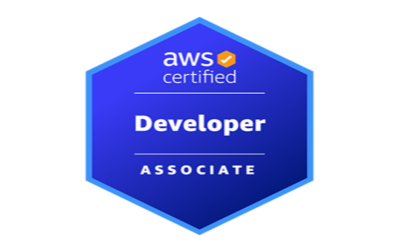
0
(0 Reviews)
 Compare
Compare
AWS Certified Developer – Associate covers the fundamental concepts of AWS uses and services and basic AWS architecture best practices. The certification also covers developing, deploying, and debugging AWS cloud-based applications—all in easy-to-follow modules, videos, and hands-on labs.
GH₵3500
Hours
Last updated Sat, 29-Nov-2025
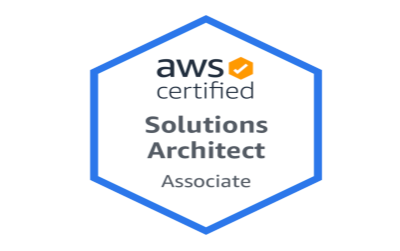
0
(0 Reviews)
 Compare
Compare
The AWS Certified Solutions Architect - Associate (SAA-C02) is focused on how CloudWatch logs work and the main design features to consider based on specific needs including: multi-tier architecture solutions; highly available and/or fault-tolerant architectures; decoupling mechanisms using AWS services; resilient storage; elastic and scalable compute solutions; high-performing and scalable storage solutions, networking solutions, database solutions; secure access to AWS resources; secure application tiers; data security options; cost-effective storage solutions and compute and database services; and cost-optimized network architectures.
GH₵3500
Hours
Last updated Sat, 29-Nov-2025
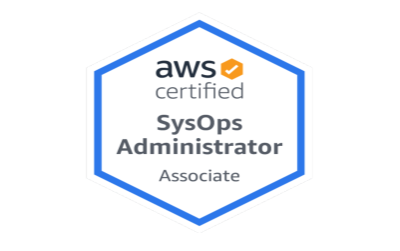
0
(0 Reviews)
 Compare
Compare
The AWS Certified SysOps Administrator - Associate course is a great next step for anyone who wants to demonstrate baseline AWS Well-Architected Framework knowledge to support and maintain AWS workloads, use AWS monitoring and logging services and remediate issues based on monitoring and availability metrics, implement scalability and elasticity for reliability and business continuity, use AWS services to provision, deploy, maintain, and automate cloud resources, implement and manage security controls to meet compliance policies and requirements, implement, configure, and troubleshoot network features and connectivity issues, and identify and implement cost and performance optimization strategies.
GH₵3500
Hours
Last updated Sat, 29-Nov-2025
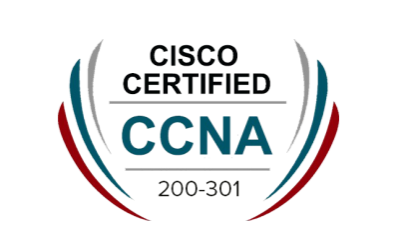
0
(0 Reviews)
 Compare
Compare
Cisco is a world-wide leader in IT, networking, and security solutions. Achieving the Cisco Certified Network Associate Certification (CCNA) is a valuable first step toward a career in IT. To gain CCNA certification, you must pass one exam that covers a wide range of IT fundamentals and knowledge bases including the latest networking technologies, software development skills, and job roles. CCNA certification gives you the foundation to build the career you want.
GH₵3500
Hours
Last updated Sat, 29-Nov-2025
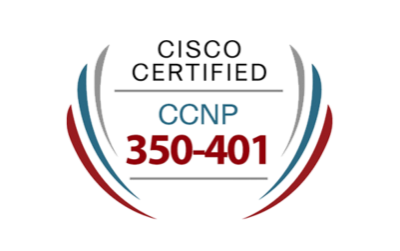
0
(0 Reviews)
 Compare
Compare
The Cisco Certified Network Professional (CCNP) and Cisco Certified Internetwork Expert (CCIE) Enterprise Core (ENCOR 350-401) course focuses on core knowledge and skills needed to master the topics on the CCNP and CCIE Enterprise Core exam. Those topics include enterprise network architecture, virtualization, network assurance, security, and automation.
GH₵3500
Hours
Last updated Sat, 29-Nov-2025

0
(0 Reviews)
 Compare
Compare
The Implementing and Operating Cisco Security Core Technologies (SCOR 350-701) course focuses on core knowledge and skills needed to master the topics on the Cisco Certified Specialist - Security Core Certification. Those topics include cybersecurity fundamentals, network security, cloud security, identity management, secure network access, endpoint protection and detection, and visibility and enforcement.
GH₵3500
Hours
Last updated Sat, 29-Nov-2025

0
(0 Reviews)
 Compare
Compare
This instructor-led Pearson CompTIA A+ Core 1 course is based on a vendor-neutral exam that measures knowledge of industry-standard technology. It covers the basic concepts of PC or mobile device hardware, networking, virtualizations and clous computing, and troubleshooting hardware and network issues.
GH₵3500
Hours
Last updated Sat, 29-Nov-2025
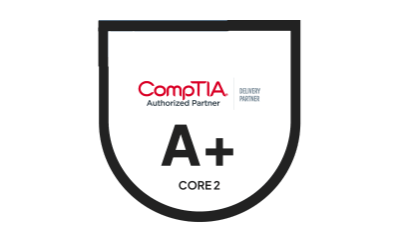
0
(0 Reviews)
 Compare
Compare
This instructor-led Pearson CompTIA A+ Core 2 course is based on a vendor-neutral exam that measures knowledge of industry-standard technology. It covers the basic concepts of PC or mobile device hardware, networking, virtualizations and clous computing, and troubleshooting hardware and network issues.
GH₵3500
Hours
Last updated Sat, 29-Nov-2025
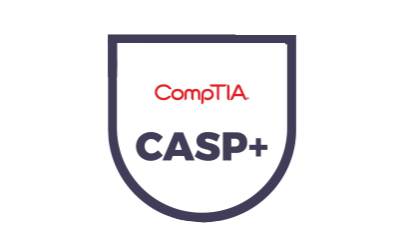
0
(0 Reviews)
 Compare
Compare
This Pearson CompTIA Advanced Security Practitioner course is a great next step for anyone working in the security field who wants to become well-versed in security architecture, security operations, security engineering and cryptography, governance, risk, and compliance. The CAS-004 certification is vendor-neutral, so the devices and technologies introduced in this course will work with multiple vendors.
GH₵3500
Hours
Last updated Sat, 29-Nov-2025
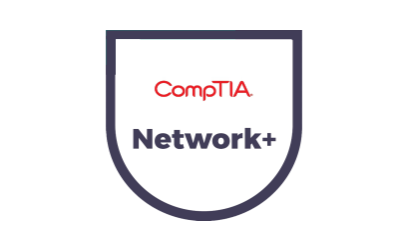
0
(0 Reviews)
 Compare
Compare
The CompTIA Network+ N10-008 course is a great first step for anyone who is entering the computer networking field. It covers the crucial concepts of network technology, including network fundamentals, implications, operations, security, and troubleshooting. The COMPTIA Network+ certification is unique in that it is vendor neutral and acts as a stepping-stone to more specialized and vendor specific certifications.
GH₵3500
Hours
Last updated Sat, 29-Nov-2025
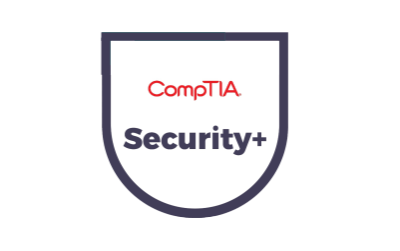
0
(0 Reviews)
 Compare
Compare
The CompTIA Security+ course focuses on an understanding of computer topics such as how to install operating systems and applications and networking topics such as how to configure IP addressing and what a VLAN is. The CompTIA Security+ will help you prepare to succeed on the CompTIA Security+ SY0-701 exam by directly addressing the exams objectives as stated by CompTIA. Preparation hints and test-taking tips, helping you identify areas of weakness and improving both your conceptual knowledge and hands-on skills are shared.
GH₵3500
Hours
Last updated Sat, 29-Nov-2025

0
(0 Reviews)
 Compare
Compare
The Certified Ethical Hacker (CEH 312-50) course is a great next step for anyone who wants to look at how attackers target networks, what tools attackers use, and how these techniques can be used by ethical hackers. Topics include the basic concepts related to ethical hacking, reconnaissance techniques, system hacking phases and attack techniques, network and perimeter hacking, web application hacking occurs, wireless network hacking, and mobile platforms, IoT, and OT hacking.
GH₵3500
Hours
Last updated Sat, 29-Nov-2025

0
(0 Reviews)
 Compare
Compare
The Certified Information Systems Security Professional (CISSP) course is a perfect companion to preparing for the CISSP Exam. It focuses specifically on the objectives for the CISSP exam introduces by ISC2 in May 2021. The course will review asset retention, secure provisioning, crypto attacks, machine learning tools, threat hunting, risk-based access control, zero trust, SAML, SOAR, CASB, securing microservices, containers, managed services, and many other topics, while helping you identify areas of weakness and improving your conceptual knowledge and hands-on skills.
GH₵3500
Hours
Last updated Sat, 29-Nov-2025
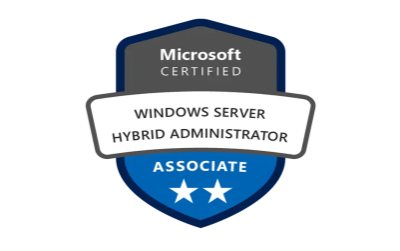
0
(0 Reviews)
 Compare
Compare
This instructor-led Pearson Administering Windows Server Hybrid Core Infrastructure (AZ-800) course comprises topics such as how to deploy and manage AD DS, hybrid identity, Windows Servers, virtual machines, containers, hybrid networks, and storage services, as well as how to perform these tasks with on-premises and Azure IaaS instances of Windows Server.
GH₵3500
Hours
Last updated Sat, 29-Nov-2025
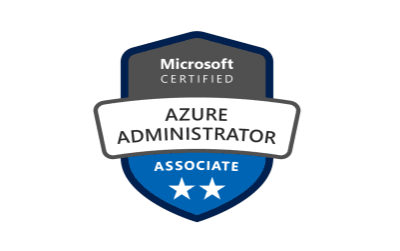
0
(0 Reviews)
 Compare
Compare
The Microsoft Azure Administrator exam focuses on common tasks and concepts that an administrator needs to understand to deploy and manage infrastructure in Microsoft Azure. This course focuses on skills and knowledge needed to manage Azure subscriptions; analyze resource utilization and consumption; manage resource groups; establish storage accounts; import/export data; configure Azure files; implement backup; create, configure, and automate VM deployment; manage VMs and VM backups; implement, manage, and connect virtual networks; create and configure Network Security Groups; manage Azure AD and its objects; and implement and manage hybrid identities. Passing the Microsoft Azure Administrator exam earns your Microsoft Certified: Azure Administrator Associate certification, demonstrating your skills in implementing, monitoring, and maintaining Microsoft Azure solutions, including major services related to compute, storage, network, and security.
GH₵3500
Hours
Last updated Sat, 29-Nov-2025
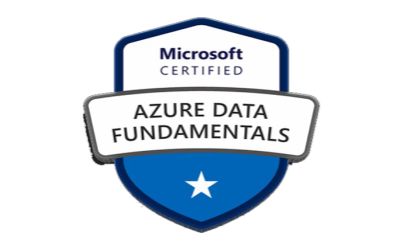
0
(0 Reviews)
 Compare
Compare
The Data Fundamentals for Microsoft Azure course focuses on core knowledge for describing fundamental database concepts and skills for cloud environments; cloud data services within Azure; cloud data roles, tasks, and responsibilities; Azure relational and non-relational data offerings, provisioning, and deployment; querying Azure relational databases; working with Azure non-relational data stores; building modern Azure data analytics solutions; and exploring Azure Data Factory, Azure Synapse Analytics, Azure Databricks, and Azure HDInsight.
GH₵3500
Hours
Last updated Sat, 29-Nov-2025
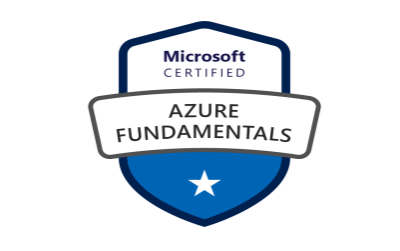
0
(0 Reviews)
 Compare
Compare
Microsoft Azure Fundamentals is your springboard into cloud computing. It covers the fundamental concepts of Azure, including service agreements, workloads, security, privacy, pricing, and support, all mapped to Microsoft's key exam objectives. An Azure Fundamentals certification is proof of your knowledge of cloud services and how those services are provided with Microsoft Azure.
GH₵3500
Hours
Last updated Sat, 29-Nov-2025
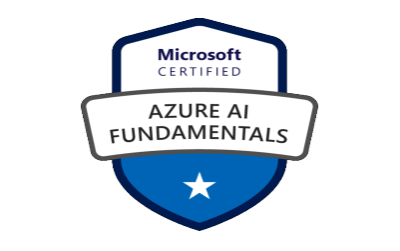
0
(0 Reviews)
 Compare
Compare
This instructor-led Microsoft Azure AI Fundamentals (AI-900) course with 180-day access prepares you for the Microsoft Exam AI-900 while helping demonstrate your real-world knowledge of diverse machine learning (ML) and artificial intelligence (AI) workloads, and how they can be implemented with Azure AI. AI-900 focuses on knowledge needed to identify features of common AI workloads and guiding principles for responsible AI; identify common ML types; describe core ML concepts; identify core tasks in creating an ML solution; describe capabilities of no-code ML with Azure Machine Learning Studio; identify common types of computer vision solutions; identify Azure tools and services for computer vision tasks; identify features of common NLP workload scenarios; identify Azure tools and services for NLP workloads; and identify common use cases and Azure services for conversational Al.
GH₵3500
Hours
Last updated Sat, 29-Nov-2025
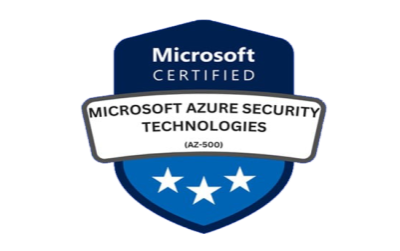
0
(0 Reviews)
 Compare
Compare
The Microsoft Azure Security Technologies course focuses on the knowledge needed to manage Azure Active Directory identities; configure secure access with Azure AD; manage application access and access control; implement advanced network security; configure advanced security for compute; monitor security with Azure Monitor, Azure Firewall manager, Azure Security Center, Azure Defender, and Azure Sentinel; configure security policies; configure security for storage and databases; and configure and manage Key Vault. You will also learn to demonstrate your real-world knowledge of Microsoft Azure security, including tools and techniques for protecting identity, access, platforms, data, and applications, and for effectively managing security operations.
GH₵3500
Hours
Last updated Sat, 29-Nov-2025
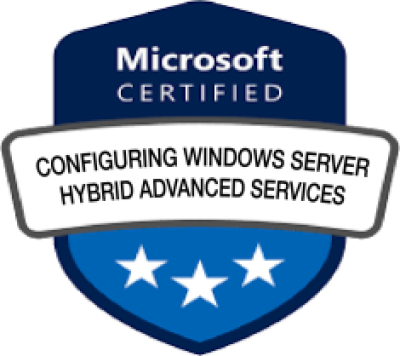
0
(0 Reviews)
 Compare
Compare
This instructor-led Pearson Configuring Windows Server Hybrid Advanced Services (AZ-801) course is a great next step for anyone who wants to become well-versed in Windows Server Hybrid administration. It covers the crucial concepts of not only how to secure Windows Server and Active Directory, but also how to manage and configure high availability and disaster recovery, migrate workloads to newer versions of Windows Server and to Azure, as well as monitor and troubleshoot Windows Server workloads across on-premises, hybrid, and cloud infrastructure.
GH₵3500
Hours
Last updated Sat, 29-Nov-2025
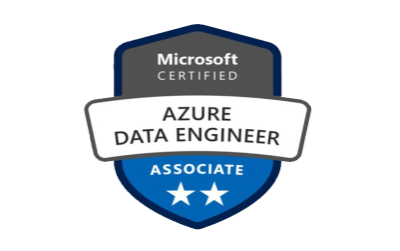
0
(0 Reviews)
 Compare
Compare
This instructor-led Data Engineering on Microsoft Azure (DP-203) course introduces the ins and outs of working with relational, non-relational, and data warehouse solutions in the Azure platform with a focus on providing the knowledge needed to make the right decisions for implementation in an organization.
GH₵3500
Hours
Last updated Sat, 29-Nov-2025

0
(0 Reviews)
 Compare
Compare
This instructor-led Designing and Implementing Microsoft Azure Networking Solutions Pearson course prepares you for the Microsoft Exam AZ-700 by introducing you to designing, implementing, and managing hybrid networking, core networking infrastructure, routing, securing, and monitoring networks, and designing and implementing private access to Azure services. This exam focuses on networking topics in Microsoft Azure, but it does require additional knowledge of the Azure Portal and related services such as virtual machines, storage accounts, monitoring tools, and more.
GH₵3500
Hours
Last updated Sat, 29-Nov-2025
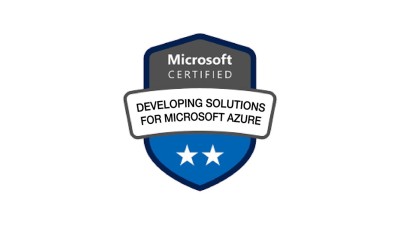
0
(0 Reviews)
 Compare
Compare
The Developing Solutions for Microsoft Azure course is a great next step for anyone who wants to become well-versed in designing, building, testing, and maintaining cloud applications and services on Microsoft Azure. It covers the crucial concepts of Azure development, from defining and designing requirements, to development, deployment, and maintenance, performance tuning, and monitoring. Azure Developers work with cloud solution architects, cloud DBAs, cloud administrators, and clients to implement solutions.
GH₵3500
Hours
Last updated Sat, 29-Nov-2025
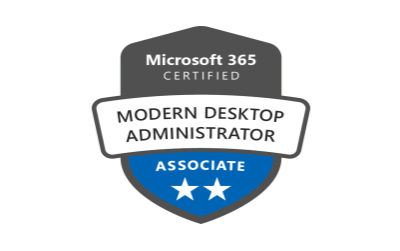
0
(0 Reviews)
 Compare
Compare
This instructor-led Microsoft 365 Administrator course deals with advanced topics, requiring candidates to have an excellent working knowledge of Microsoft 365 administration. It will prepare you for the Microsoft Exam MS-102 and help you to understand how to deploy and manage Microsoft 365 tenancies and integrate Microsoft 365 with an on-premises Active Directory environment, manage security and threats, and implement the compliance technologies in Microsoft Purview.
GH₵3500
Hours
Last updated Sat, 29-Nov-2025
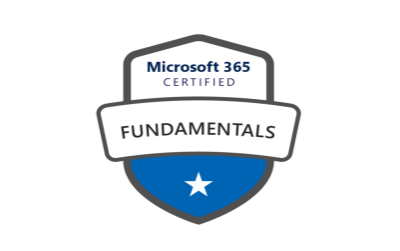
0
(0 Reviews)
 Compare
Compare
This instructor-led Microsoft 365 Fundamentals (MS-900) course focuses on knowledge about different types of cloud services; benefits and considerations of using cloud, hybrid, or on-premises services; core productivity capabilities of Microsoft 365; collaboration solutions of Microsoft 365; endpoint modernization, management concepts, and deployment options in Microsoft 365; analytics capabilities of Microsoft 365; identity and access management solutions of Microsoft 365; threat protection solutions of Microsoft 365; trust, privacy, risk, and compliance solutions of Microsoft 365; Microsoft 365 pricing and billing management options; licensing options available in Microsoft 365; and support options for Microsoft 365 services. It will help you demonstrate your mastery of real-world foundational knowledge about the considerations and benefits of adopting cloud services and the Software as a Service cloud model, as well as specific options and benefits of Microsoft 365 cloud service offerings.
GH₵3500
Hours
Last updated Sat, 29-Nov-2025
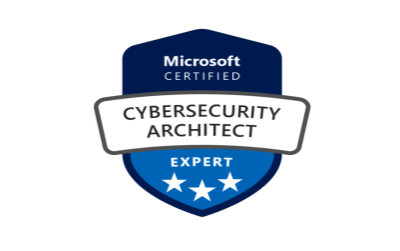
0
(0 Reviews)
 Compare
Compare
This instructor-led Microsoft Cybersecurity Architect (SC-100) Pearson course prepares you for the Microsoft Exam SC-100 which includes designing a Zero Trust strategy and architecture; evaluating Governance Risk Compliance (GR) technical strategies and security operations strategies; designing security for infrastructure; and designing a strategy for data and applications.
GH₵3500
Hours
Last updated Sat, 29-Nov-2025
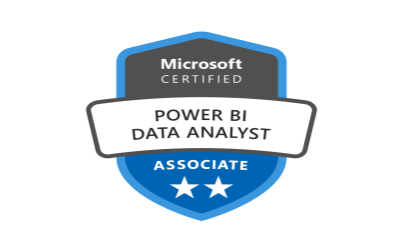
0
(0 Reviews)
 Compare
Compare
This instructor-led Pearson Microsoft Power BI Data Analyst course focuses knowledge and understanding of the Microsoft Power BI data analysis tool, including preparing the data; modeling the data; visualizing and analyzing the data; and deploying and maintaining assets. Designed for data analysts, business intelligence professionals, and report creators who are seeking to validate their skills and knowledge in analyzing data with Power BI.
GH₵3500
Hours
Last updated Sat, 29-Nov-2025

0
(0 Reviews)
 Compare
Compare
This instructor-led Microsoft Endpoint Administrator (MD-102) course provide the foundation for the Microsoft 365 Certified: Modern Desktop Administrator Associate certification. It prepares you for the Microsoft Exam MD-102 and help demonstrate your real-world mastery of the skills and knowledge required to deploy, manage, and protect modern endpoints at scale in Microsoft 365 environments. Designed for endpoint administrators, this Exam Ref focuses on the critical thinking and decision-making acumen needed for success at the Microsoft Certified Associate level.
GH₵3500
Hours
Last updated Sat, 29-Nov-2025
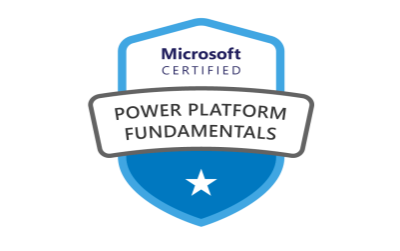
0
(0 Reviews)
 Compare
Compare
This instructor-led Microsoft Power Platform Fundamentals Pearson course prepares you for the Microsoft Exam PL-900 while helping demonstrate your real-world knowledge of the four Microsoft Power Platform products: Power BI, Power Apps, Power Automate, and Power Virtual Agents. PL-900 focuses on knowledge needed to describe the business value of Microsoft Power Platform; identify the core components of Microsoft Power platform; describe the business value of Power BI; demonstrate the capabilities of Power Apps; demonstrate the capabilities of Power Automate; and demonstrate the capabilities of Power Virtual Agents
GH₵3500
Hours
Last updated Sat, 29-Nov-2025
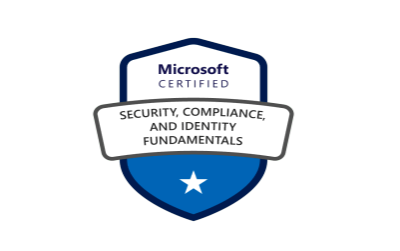
0
(0 Reviews)
 Compare
Compare
This instructor-led Pearson Microsoft Security, Compliance, & Identity Fundamentals (SC-900) course is targeted to those looking to familiarize themselves with the fundamentals of security, compliance, and identity (SCI) across cloud-based and related Microsoft services. It covers topics such Microsoft Azure and Microsoft 365 and requires you to understand how Microsoft security, compliance, and identity solutions can span across these areas to provide a holistic and end-to-end solution.
GH₵3500
Hours
Last updated Sat, 29-Nov-2025
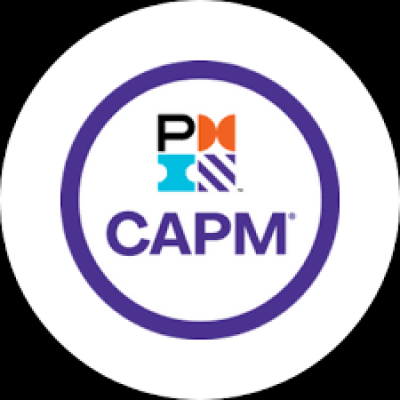
0
(0 Reviews)
 Compare
Compare
This instructor-led Pearson Certified Associate in Project Management (CAPM)® course is focused on specific educational and experience attributes. There is a connection to the Project Management Institute (PMI) definitions and expectations for understanding of topics. The CAPM concept areas are traditional project management fundamentals: product life cycles and approaches to delivering project value using adaptive, predictive and hybrid approaches: and the role of business analysis in project management. Completion and of the course and passing the exam signifies an individual has the process knowledge, experience, and training required to practice the principles and standards prescribed by the Project Management Institute (PMI).
GH₵3500
Hours
Last updated Sat, 29-Nov-2025

0
(0 Reviews)
 Compare
Compare
This instructor-led Project Management Professional (PMP) course is focused on specific educational and experience attributes, connected to Project Management Institute (PMI) definitions (BOK7) and expectations for understanding of topics. The PMP domains are people, process, and business environment. Completing the course and passing the exam signifies an individual has the process knowledge, experience, and training required to practice the principles and standards prescribed by the Project Management Institute (PMI).
GH₵3500
Hours
Last updated Sat, 29-Nov-2025

0
(0 Reviews)
 Compare
Compare
This Instructor-led VMware vSphere 8.x Professional (2V0-21.23) course focuses on core knowledge and skills needed to successfully install, configure, and manage VMware vSphere 8.x environments while also helping you to master the topics on the VMware Certified Professional ̶ Data Center Virtualization (VCP-DCV) for vSphere 8.x exam. Those topics include architecture and technologies; VMware products and solutions; components and requirements; installing, configuring, and setup; performance-tuning, optimization, and upgrades; clusters and high-availability; and administrative and operational tasks.
GH₵3500
Hours
Last updated Sat, 29-Nov-2025
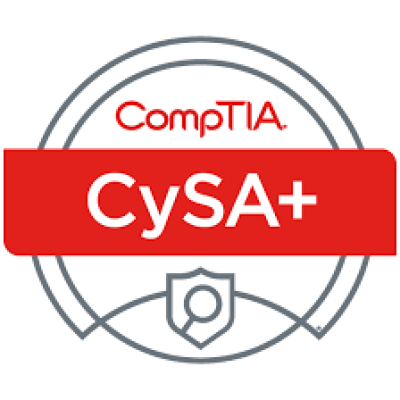
0
(0 Reviews)
 Compare
Compare
CompTIA Cybersecurity Analyst (CySA+) course is for cyber professionals tasked with incident detection, prevention and response through continuous security monitoring. This globally recognized, intermediate-level certification will validate your cybersecurity analyst skills. Earning the certificate will prove to employers that you know how to leverage intelligence and threat detection techniques and are trained to continuously monitor security, mitigate risks, and combat threats to networks and devices.
GH₵3500
Hours
Last updated Sat, 29-Nov-2025
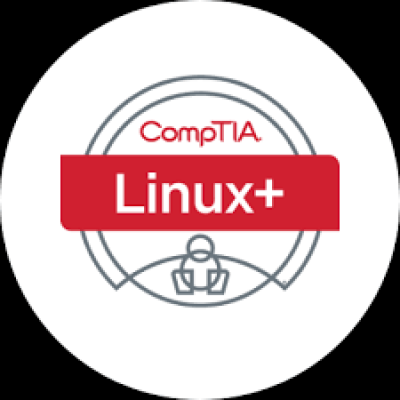
0
(0 Reviews)
 Compare
Compare
This instructor-led CompTIA Linux+ course prepares you for the CompTIA Linux+ XK0-005 certification exam by introducing you to system management, security, scripting, containers, and automation, and troubleshooting. This exam focuses on topics in Linux, but it does require additional knowledge of the command-line environments.
GH₵3500
Hours
Last updated Sat, 29-Nov-2025

0
(0 Reviews)
 Compare
Compare
The Cisco Certified Support Technician course prepares you for the CCST Networking 100-150 exam by introducing you to foundational knowledge and skills needed to show how networks operate, including the devices, media, and protocols that enable network communications. This exam focuses on your knowledge of: Standards and Concepts, Addressing and Subnet Formats, Endpoints and Media Types, Infrastructure, and Diagnosing Problems.
GH₵3500
Hours
Last updated Sat, 29-Nov-2025

0
(0 Reviews)
 Compare
Compare
As remote work becomes the new norm, ensuring secure and seamless access to data and applications is more important than ever for achieving organizational goals. Enter the newly updated CompTIA Cloud+ (CV0-004). Building on the previous version (CV0-003), this enhanced course equips candidates with advanced skills to create robust cloud computing environments and ensure 24/7 access to critical resources.
GH₵3500
Hours
Last updated Sat, 29-Nov-2025
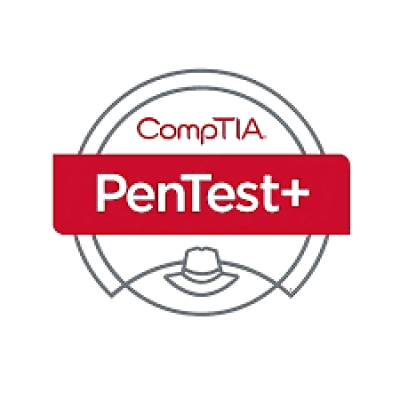
0
(0 Reviews)
 Compare
Compare
The goal of this instructor-led course is to prepare you for the CompTIA PenTest+ Certification exam (PT0-002). You’ll have everything you need to improve your chances of passing on the first try, including text explanations, video demos, lab activities, self-assessment questions, and a practice exam.
GH₵3500
Hours
Last updated Sat, 29-Nov-2025
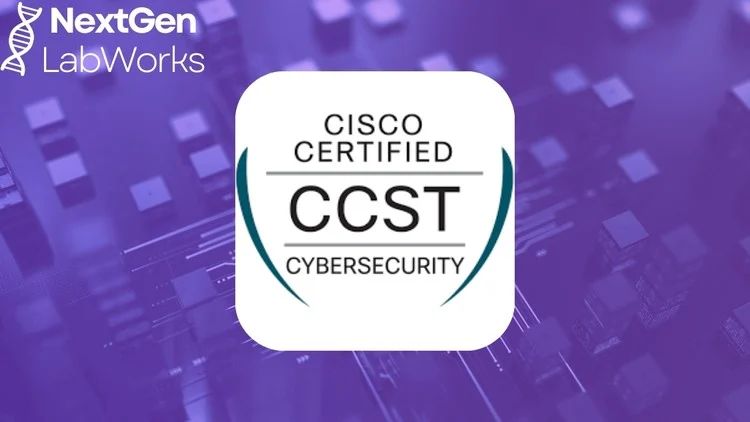
0
(0 Reviews)
 Compare
Compare
The Cisco Certified Support Technician (CCST) Cybersecurity (100-160) course prepares individuals for entry-level cybersecurity roles by covering essential security principles, network and endpoint security, vulnerability assessment, risk management, and incident handling. The course validates skills in protecting systems and defending against cyber attacks through training for the 50-minute, 35-50 question exam. Key topics include understanding the CIA triad, network security concepts like firewalls and VPNs, endpoint security tools, risk assessment processes, and the steps involved in responding to a security incident.
GH₵3500
Hours
Last updated Sat, 29-Nov-2025
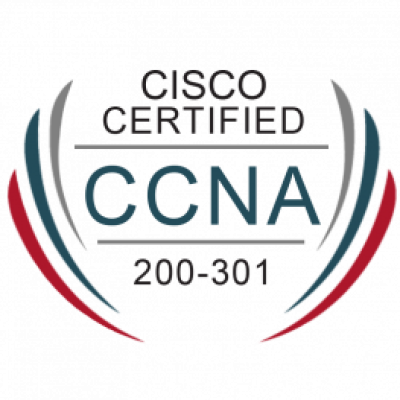
0
(0 Reviews)
 Compare
Compare
Cisco is a world-wide leader in IT, networking, and security solutions. Earning a Cisco Certified Network Associate Certification (CCNA) is a valuable first step toward a career in IT. To earn CCNA certification, you must pass one exam that covers a range of basic IT knowledge, including networking and security fundamentals, IP services, software development, and automation. CCNA certification gives you a solid foundation to start or build the career you want. The goal of this course is to provide you with all the tools you need to prepare for the CCNA exam — including text explanations, video demos, lab activities, self-assessment questions, and a practice exam — and increase your chances of passing on your first try.
GH₵3500
Hours
Last updated Sat, 29-Nov-2025
These are the most popular courses among listen courses learners worldwide
These are the most latest courses among listen courses learners worldwide

0
(0 Reviews)
 Compare
Compare
Cisco is a world-wide leader in IT, networking, and security solutions. Earning a Cisco Certified Network Associate Certification (CCNA) is a valuable first step toward a career in IT. To earn CCNA certification, you must pass one exam that covers a range of basic IT knowledge, including networking and security fundamentals, IP services, software development, and automation. CCNA certification gives you a solid foundation to start or build the career you want. The goal of this course is to provide you with all the tools you need to prepare for the CCNA exam — including text explanations, video demos, lab activities, self-assessment questions, and a practice exam — and increase your chances of passing on your first try.
GH₵3500
Hours
Last updated Sat, 29-Nov-2025

0
(0 Reviews)
 Compare
Compare
The Cisco Certified Support Technician (CCST) Cybersecurity (100-160) course prepares individuals for entry-level cybersecurity roles by covering essential security principles, network and endpoint security, vulnerability assessment, risk management, and incident handling. The course validates skills in protecting systems and defending against cyber attacks through training for the 50-minute, 35-50 question exam. Key topics include understanding the CIA triad, network security concepts like firewalls and VPNs, endpoint security tools, risk assessment processes, and the steps involved in responding to a security incident.
GH₵3500
Hours
Last updated Sat, 29-Nov-2025

0
(0 Reviews)
 Compare
Compare
The goal of this instructor-led course is to prepare you for the CompTIA PenTest+ Certification exam (PT0-002). You’ll have everything you need to improve your chances of passing on the first try, including text explanations, video demos, lab activities, self-assessment questions, and a practice exam.
GH₵3500
Hours
Last updated Sat, 29-Nov-2025

0
(0 Reviews)
 Compare
Compare
As remote work becomes the new norm, ensuring secure and seamless access to data and applications is more important than ever for achieving organizational goals. Enter the newly updated CompTIA Cloud+ (CV0-004). Building on the previous version (CV0-003), this enhanced course equips candidates with advanced skills to create robust cloud computing environments and ensure 24/7 access to critical resources.
GH₵3500
Hours
Last updated Sat, 29-Nov-2025

0
(0 Reviews)
 Compare
Compare
The Cisco Certified Support Technician course prepares you for the CCST Networking 100-150 exam by introducing you to foundational knowledge and skills needed to show how networks operate, including the devices, media, and protocols that enable network communications. This exam focuses on your knowledge of: Standards and Concepts, Addressing and Subnet Formats, Endpoints and Media Types, Infrastructure, and Diagnosing Problems.
GH₵3500
Hours
Last updated Sat, 29-Nov-2025

0
(0 Reviews)
 Compare
Compare
This instructor-led CompTIA Linux+ course prepares you for the CompTIA Linux+ XK0-005 certification exam by introducing you to system management, security, scripting, containers, and automation, and troubleshooting. This exam focuses on topics in Linux, but it does require additional knowledge of the command-line environments.
GH₵3500
Hours
Last updated Sat, 29-Nov-2025

0
(0 Reviews)
 Compare
Compare
CompTIA Cybersecurity Analyst (CySA+) course is for cyber professionals tasked with incident detection, prevention and response through continuous security monitoring. This globally recognized, intermediate-level certification will validate your cybersecurity analyst skills. Earning the certificate will prove to employers that you know how to leverage intelligence and threat detection techniques and are trained to continuously monitor security, mitigate risks, and combat threats to networks and devices.
GH₵3500
Hours
Last updated Sat, 29-Nov-2025

0
(0 Reviews)
 Compare
Compare
This Instructor-led VMware vSphere 8.x Professional (2V0-21.23) course focuses on core knowledge and skills needed to successfully install, configure, and manage VMware vSphere 8.x environments while also helping you to master the topics on the VMware Certified Professional ̶ Data Center Virtualization (VCP-DCV) for vSphere 8.x exam. Those topics include architecture and technologies; VMware products and solutions; components and requirements; installing, configuring, and setup; performance-tuning, optimization, and upgrades; clusters and high-availability; and administrative and operational tasks.
GH₵3500
Hours
Last updated Sat, 29-Nov-2025

0
(0 Reviews)
 Compare
Compare
This instructor-led Project Management Professional (PMP) course is focused on specific educational and experience attributes, connected to Project Management Institute (PMI) definitions (BOK7) and expectations for understanding of topics. The PMP domains are people, process, and business environment. Completing the course and passing the exam signifies an individual has the process knowledge, experience, and training required to practice the principles and standards prescribed by the Project Management Institute (PMI).
GH₵3500
Hours
Last updated Sat, 29-Nov-2025

0
(0 Reviews)
 Compare
Compare
This instructor-led Pearson Certified Associate in Project Management (CAPM)® course is focused on specific educational and experience attributes. There is a connection to the Project Management Institute (PMI) definitions and expectations for understanding of topics. The CAPM concept areas are traditional project management fundamentals: product life cycles and approaches to delivering project value using adaptive, predictive and hybrid approaches: and the role of business analysis in project management. Completion and of the course and passing the exam signifies an individual has the process knowledge, experience, and training required to practice the principles and standards prescribed by the Project Management Institute (PMI).
GH₵3500
Hours
Last updated Sat, 29-Nov-2025
They efficiently serve large number of students on our platform
Gather your thoughts, and make your decisions clearly
1
We are here to make your expertise MORE Valuable
Have something to know? Check here if you have any questions about us.
The payments will be automatically charged from your selected payment method upon registration for the first month, and then every 28 days thereafter. Once the payment goes through, you pay for the lessons to the tutor once they take place and are confirmed by you.
You can pay for your subscription via credit card (we currently accept Visa, MasterCard,) or MoMo. If you have your card details saved in your WATT E-School account, you will be billed automatically.
If you feel that you need more lessons on a regular basis, upgrading your subscription would be a perfect solution for you. If you do not wish to upgrade, you can add some extra lessons to your subscription before the renewal date.
If there was any issue with your subscription renewal payment, you can update your payment method and renew your subscription yourself.
You can follow these steps to renew your subscription!
If your subscription plan got canceled due to the issue with the expired or rejected card, low balance or other reasons, you can update your payment method and click ‘Subscribe’/‘Resubscribe’ to renew the payment:



Study any topic, anytime. Explore thousands of courses for the lowest price ever!




